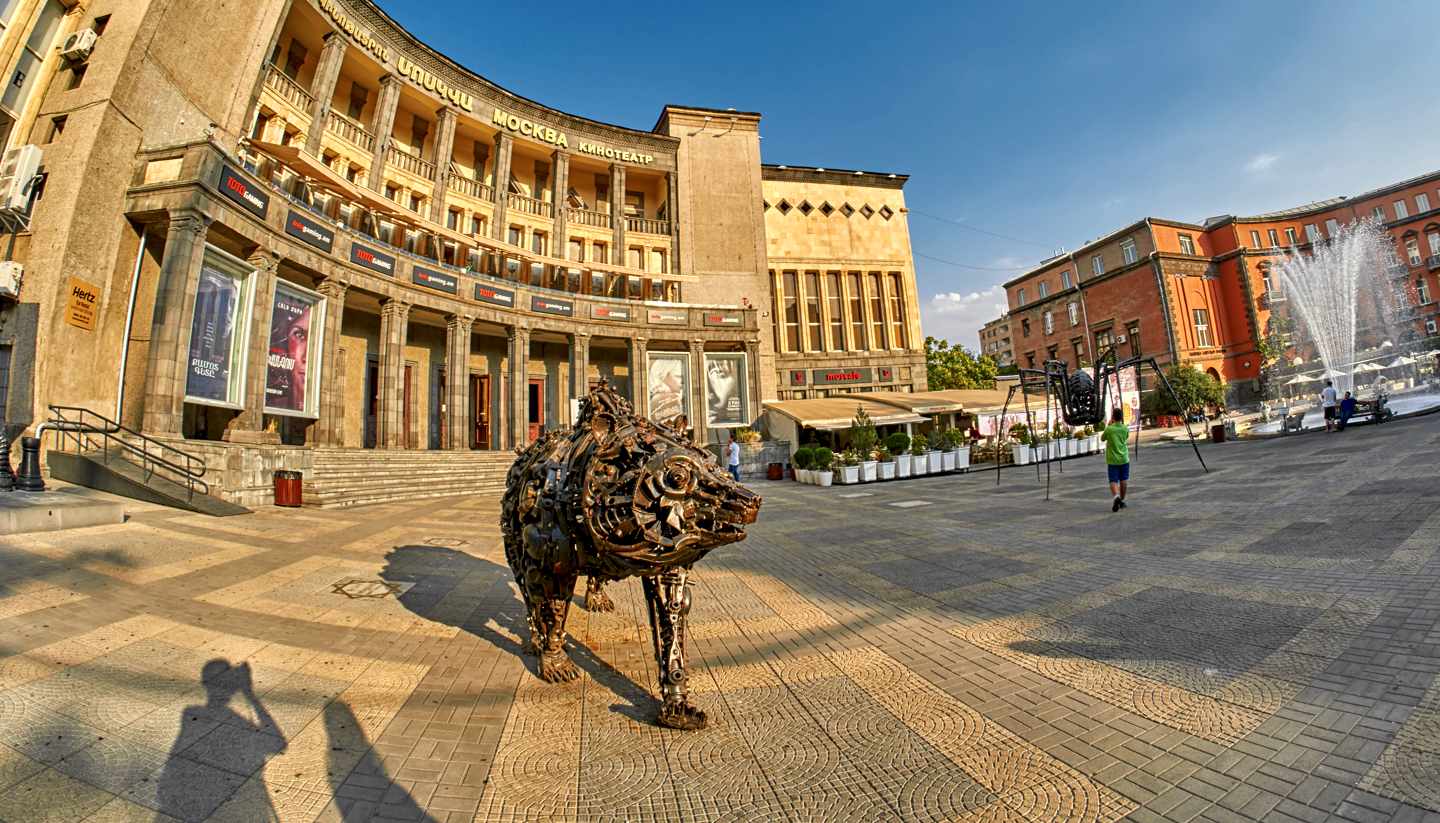Armenia History, Language and Culture
History of Armenia
Before it was incorporated into the Roman Empire in AD114, the Armenian Empire stretched from the Caspian Sea in the east to the Mediterranean in the west. In 301, Armenia became the first country to adopt Christianity as its state religion and by the fifth century, the church had developed an alphabet, which is still used today.
The incorporation of Armenia into the Turkish Seljuk Empire, in the 11th century, resulted in the first of many waves of emigration before the Egyptian Mamluk advance was followed by the Ottoman Turks occupation and a constant struggle with the Iranian Safavid dynasty until the beginning of the 19th century when the Russians moved in and took control.
In 1915 the Turks massacred an estimated 1.25 million Armenians in the first act of genocide of the 20th century. After a brief spell of independence in the aftermath of World War I and following the Bolshevik victory in the Russian civil war Armenia was incorporated into the Transcaucasian Soviet Federated Republic and later became one of three distinct Soviet republics with Azerbaijan and Georgia. In the late 1980s, the Armenians were among the first groups in the Soviet Union to test the limits of glasnost with a series of demonstrations against industrial pollution and repression of the population of Nagorno-Karabakh.
In December 1988, a massive double earthquake struck killing some 60,000 people and destroying nearly half a million buildings. The city of Spitak experienced near total destruction and in Leninakan, Armenia’s second city, some 80 per cent of buildings collapsed. The reconstruction process and the simmering Karabakh conflict strengthened the hand of the growing dissident movement leading to the election of Levon Ter-Petrossian, head of the Pan-Armenian National Movement, as President. Independence was formally declared on 23 September 1991 and the Karabakh conflict soon escalated into full-scale war until a Moscow-brokered ceasefire took effect in May 1994.
Although there are still many obstacles, Armenia and Azerbaijan have found sufficient issues of common interest to establish a reasonable working relationship, but diplomatic relations between Turkey were severed in 1992 and remain so. However, Armenia has maintained solid ties with Russia and Iran, as well as the United Statesand the European Union.
Did you know?
In the wake of the 1988 earthquake, the British music industry launched Rock Aid Armenia to raise money through the release of the album Earthquake and three singles – covers of What’s Going On, Smoke on the Water and Led Zeppelin’s Rock and Roll.
The National Art Gallery in the capital Yerevan has more than 16,000 works, some dating back to the Middle Ages.
The apricot is the national fruit of Armenia.
Armenia Culture
Religion in Armenia
94% Armenian Apostolic Church, with Catholic and Protestant communities and a Russian Orthodox minority. Armenia is the oldest Christian nation in the world, its conversion dating from the year AD 301.
Social Conventions in Armenia
Almost all entertaining takes place in private homes, and guests may find themselves subjected to overwhelming hospitality and generosity, as well as being expected to eat enormously and participate in endless toasts. Visitors invited to an Armenian's home should arrive bearing some kind of small gift, such as flowers and alcohol (preferably imported) or chocolates. Handshaking is the normal form of greeting. Business cards are invariably exchanged at any kind of official meeting and not infrequently on first meeting people socially as well.
Conversation tends to be highly politicised, and guests may be well advised to avoid expressing strong opinions. Homosexuality is now decriminalised but is still an unacceptable lifestyle for many Armenians. Women tend to be less retiring than in nearby Muslim countries, and can usually dress in normal western-style clothing (especially in the capital), although female visitors may wish to avoid wearing short skirts and shorts.
Photography: Refrain from photographing sites such as military bases equipment and installations. Also be aware of cultural sensitivities when photographing churches and other religious sites.
Language in Armenia
Armenian. Russian is usually understood, but rarely used; Kurdish is sometimes used in broadcasting as 56,000 Kurds inhabit Armenia.


